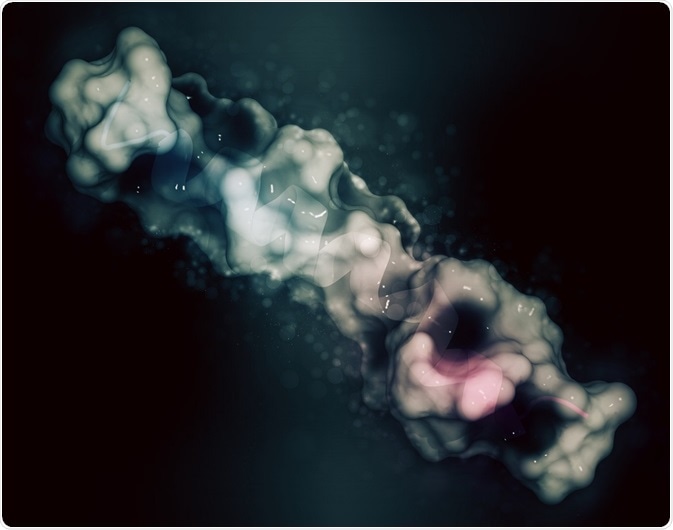Our knowledge of the ability of the gut microbiota to influence host health and homeostasis is expanding. Recent data indicate that the microorganisms present in the gut may be capable of directly (or indirectly) influencing the gut-brain axis resulting in changes in energy homeostasis, which may subsequently lead to the development of obesity.

Credit: molekuul_be/ Shutterstock.com
The gut-brain axis involves the communication of information directly from the gastrointestinal tract by gut hormones to the appetite regulatory centers located in the central nervous system. Such information is transferred via either vagal or non-vagal nerve signaling pathways, or directly through blood.
Intestinal microbiota can influence the release of several key transmitters that operate on the gut-brain axis and that may modulate food intake. These are predominantly short-chain fatty acids, serotonin, peptide YY, ghrelin and ligands of the endocannabinoid system.
Pathways of the gut-brain axis
Meal anticipation, mechanical stimulation of the gut because of the presence of food in the stomach, and gut nutrient content, can all stimulate the secretion of gut hormones which subsequently activate signaling pathways from the intestines to the brainstem and hypothalamus to terminate food consumption.
Those hormones are known as “anorectic” hormones (such as peptide YY and glucagon-like peptide 1), as opposed to “orexigenic” hormones (like ghrelin) that initiate hunger feelings prior to a meal. Nuclei located within the hypothalamus are a part of a larger network that signal to other brain areas involved in appetite control.
These may be in the brainstem, amygdala, nucleus accumbens and the prefrontal cortex. Moreover, vagal afferents from the gut represent an alternative pathway of brain signaling.
In any case, the vagus nerve represents the major neuroanatomical link between the gastrointestinal tract and the brain. If all the sensory vagal fibers in the gut are transected, this is followed by an increase in meal size and duration.
Microbial communities and obesity
The interaction between the host and gut microbiota takes the form of a complex and active symbiosis. In obese individuals, Firmicutes species (most notably Lactobacillaceae, Lachnospiraceae and Veillonellaceae) were seen in abundance; on the other hand, a low-fat, high-fiber diet decreased the number of Firmicutes.
If we consider the effect of microbial variation on the gut-brain axis, studies show that Bifidobacteria concentrations are inversely associated with the development of glucose intolerance, fat mass and the occurrence of bacterial lipopolysaccharides in the blood via stimulation of peptide YY and ghrelin.
This is where interventions with prebiotics (such as oligofructose or dietary fructans) come into play, as they have the ability to prompt bifidobacterial growth and, in turn, stimulate signals which will result in weight reduction, by increased levels of peptide YY and reduced levels of ghrelin.
Modulation of signaling molecules
It was shown that axenic (germ-free) diets were characterized by a decreased intestinal expression of satiety peptides such as cholecystokinin, peptide YY and glucagon-like peptide-1, as well as with decreased plasma levels of gastrointestinal hormones like leptin compared to normal controls.
This was accompanied by alterations in biochemical plasma markers that mimic a fasting state, with decreased circulating glucose and increased fat metabolism.
Glucagon-like peptide-1 has a pivotal role in regulating communication between the gut lumen and its nutritional load with the peripheral organs such as muscle, liver, adipose tissue and brain. This is achieved by increases in satiety, insulin secretion and gut transit time after the meal. In addition, the secretion of glucagon-like peptide-1 is decreased in obesity, which results in insulin resistance independent of circulating fatty acids levels.
Future work that focuses on deciphering the key players and roles in these interactions could provide potential therapeutic models aimed at reducing energy intake and thus decreasing the prevalence of obesity. This is a major step towards personalized medicine in the field of weight control.
Sources
Further Reading
Last Updated: Jan 2, 2023